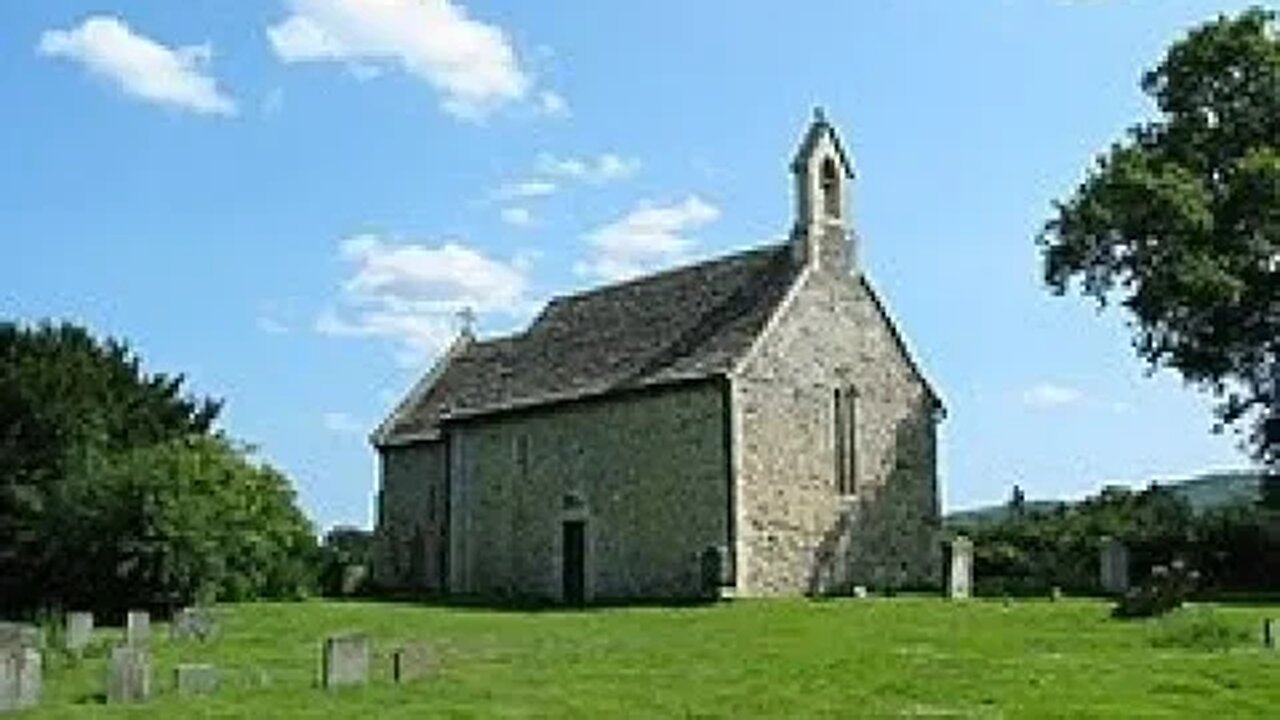Premium Only Content

Night time Graveyard Buncton Chapel Matt & Alfie
Buncton existed as a settlement at the time of the Domesday survey in 1086, when it was called Bongetune. Its origins lie in a manor whose land lay within two exclaves of the parish of Ashington within the Rape of Bramber, one of the six ancient subdivisions of Sussex. The medieval manor house has vanished, but a 17th-century replacement still stands.
The settlement's church was built on a rural site, considered a "picturesque setting", at an unknown date during the Norman period. Most sources date its construction to the late 11th or early 12th century; others offer no more confident attribution than 12th-century, "1066 to 1200" or "mostly Norman". An article published in volume 38 of the Sussex Archaeological Collections (1892) dated it to 1150–1180 and attributed its construction to the monks of Sele Priory at nearby Beeding, although a wide-ranging study of Sussex church architecture 15 years later suggested a date of c. 1070 for the nave and chancel arch—partly based on the lack of buttresses. This date would make the church a Saxon–Norman transitional building
The church had a chancel with a squared-off east end and a nave with no aisles, with a chancel arch between them. This "two-cell" style was characteristic of small Sussex churches of the 11th and 12th centuries, especially those around the South Downs. The walls of both parts are quite high, and have been called "too tall for so small a church". Some rubble and tiles from a nearby Roman building were used in its construction; an east–west Roman road, the Sussex Greensand Way, on the lower part of the Greensand Ridge passed close to the chapel, and a large villa stood about 1⁄2 mile (0.8 km) away, near the original Buncton manor house. (The villa's hypocaust was discovered in 1848.)
The chancel was altered in the 13th century, and the east end was further changed a century later. It was shortened, the east wall was rebuilt with square masonry blocks, and a Decorated Gothic window was inserted. The church also gained an aumbry and a piscina at this time, and some richly decorative Norman-era masonry arches were inserted in the exterior walls on the north and south sides. They came from another building—possibly Sele Priory—at some point between the 14th century and the Reformation. The only significant structural alteration was a 19th-century bellcote; compared to many ancient churches in Sussex, the church remains "delightfully unrestored". Some modest renovation was also carried out in 1906. Ancient churches which have survived intact or with minimal alteration often indicate a moribund local economy and loss of local population: local worshippers neither needed nor could afford to update their church.
The 14th-century piscina
There have been many changes in the parochial arrangements of the church, and for most of its existence it has been a subordinate church within a larger parish. It was recorded as a parish church in 1323, and its rectors occasionally administered the church at nearby Wiston. In the 15th century, though, All Saints lost its parish status as it was linked with St Peter and St Paul's Church in neighbouring Ashington. Thereafter it served as a chapel of ease to that church. (Ashington had been split from the parish of nearby Washington in about the 12th century.) By 1535, the parish and benefice name was Ashington with Buncton. In 1977, Ashington with Buncton and Washington with Wiston parishes were united into a single large benefice; this legal entity still exists, but by the end of the 20th century All Saints was in the parish of St Mary's Church in Wiston. St Mary's was declared redundant by the Diocese of Chichester at the end of 2009.
The north impost of the chancel arch had a strange carved stone figure dating from the 12th century. Although it is common for Norman churches to have carved or painted representations of human faces or figures, Buncton's was a very unusual example: an 8-inch (20 cm) sculpture of a person of indeterminate sex showing its genitals. It was similar to a Sheela na gig—typically a smiling naked woman with exposed genitalia, common in churches in the Republic of Ireland but rarely seen elsewhere, and reputedly associated with pagan sites, Celtic fertility rites or medieval anti-immorality teaching. About 30 such carvings exist in Britain. In December 2004, an unknown person entered the church and destroyed the carving with a chisel, smashing it into dozens of pieces.
-
 LIVE
LIVE
Wendy Bell Radio
6 hours agoDemocrats Are As Fake As Russian Collusion
9,106 watching -
 48:34
48:34
Randi Hipper
2 hours agoBITCOIN TAKES OVER WALL STREET AS IT NEARS ALL TIME HIGHS
20.9K -
 57:51
57:51
MTNTOUGH Podcast w/ Dustin Diefenderfer
9 hours agoSam Mackey: From Juvenile Hall to a New Start in the Military | MTNPOD #126
18.7K -
 2:11:33
2:11:33
Matt Kohrs
13 hours agoMarket Open: New Highs, Breaking Trade News & Tech Earnings Report || Live Trading
32.9K2 -
 1:08:41
1:08:41
JULIE GREEN MINISTRIES
4 hours agoUNPRECEDENTED CHANGE IS COMING TO THE TAX SYSTEM IN THE UNITED STATES
132K191 -
 1:21:44
1:21:44
Chicks On The Right
6 hours agoPot-Banging for Gaza? Sydney Sweeney Backlash & Harry Enten UNLOADS on Candace | Chicks on the Right
31.6K10 -
 1:08:18
1:08:18
Game On!
19 hours agoAre The Colts a SERIOUS Super Bowl Contender?
31.1K -
 4:54:02
4:54:02
BBQPenguin_
5 hours agoTasking & PVP!
18.4K -
 LIVE
LIVE
FyrBorne
14 hours ago🔴Warzone M&K Sniping: Birthday Stream! Come On In For Cake and Sniping
68 watching -
 29:10
29:10
reallygraceful
23 hours ago $1.32 earnedWill GHISLAINE MAXWELL Be a Free Woman Soon?
42K66